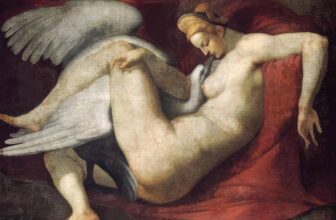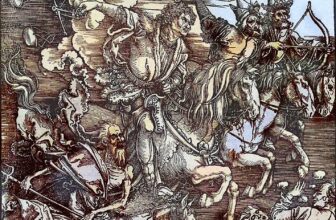What are Pinturicchio Famous Paintings
Shopping Ads: Invest in Hidden Masterpiece: Rare Antique Oil Paintings For Sale. Limited Originals Available 💰😊 Are you looking for authentic hidden masterpiece? Explore old master antique oil paintings from the Renaissance and Baroque eras. From 16th-century portraits to 18th-century landscapes. Authenticity guaranteed, Old Master antique oil paintings for sale. Shop Now! 🎨 Renaissance And Baroque Art Old Master Portrait Paintings Landscape Antique PaintingsIn the luminous age of the Italian Renaissance, where giants like Leonardo da Vinci, Michelangelo, and Raphael shaped the course of Western art, another name, Pinturicchio, quietly painted his legacy into the grand frescoes of churches, palaces, and chapels across Italy. Often overlooked in popular narratives, Bernardino di Betto, known by the affectionate nickname Pinturicchio (meaning “little painter”), was a master of color, narrative detail, and ornamental splendor.
He may not have enjoyed the same enduring fame as his peers, but Pinturicchio’s work remains a dazzling testament to the richness of Renaissance storytelling, echoing through the ornate walls of the Vatican and echoing across centuries with his unforgettable visual poetry.
The Early Life of Pinturicchio
Bernardino di Betto was born around 1454 in Perugia, in the region of Umbria, Italy. His childhood remains largely undocumented, but we know that he was born into modest circumstances. His father, Betto di Blagio, was a humble cloth-worker, and young Bernardino likely discovered his artistic inclinations in local workshops.
Pinturicchio received his early training in the vibrant artistic environment of Perugia, a city that was fast becoming an artistic hub during the Renaissance. He later collaborated with the great Pietro Perugino, under whom he refined his skills in perspective, fresco technique, and religious iconography. His small stature earned him the nickname “Pinturicchio,” but it was his vast imagination and skill that truly defined him.
What is Pinturicchio Known For?
Pinturicchio is celebrated for his:
Vivid frescoes with elaborate architectural and landscape settings
Narrative richness, often including detailed secondary scenes within larger compositions
Use of gold leaf and vibrant colors, which lent a decorative and majestic quality to his works
Portraits of noble and religious patrons, integrated seamlessly into biblical or mythological scenes
Above all, Pinturicchio was a master visual storyteller. His work was not just decorative, it was didactic and devotional, designed to guide viewers through biblical and historical narratives with clarity and beauty.
The Vatican Years: A Career Breakthrough
Pinturicchio’s major breakthrough came in the 1480s, when he was summoned to Rome to work on a series of frescoes in the Vatican under the supervision of Pope Sixtus IV. He was one of the artists hired to decorate the Sistine Chapel, where he collaborated alongside Sandro Botticelli, Domenico Ghirlandaio, and Cosimo Rosselli.
Though his contributions to the Sistine Chapel were overshadowed by Michelangelo’s later ceiling frescoes, Pinturicchio’s early Vatican work showcased his immense narrative ability and positioned him among the elite painters of his time.
In the following decade, he secured even more prestigious commissions, including the Borgia Apartments under Pope Alexander VI, where he would create some of his most famous and enduring works.
Famous Paintings by Pinturicchio
Here are Pinturicchio’s most renowned and significant works:
1. The Borgia Apartments (1492–1495), Vatican Palace, Rome
One of Pinturicchio’s crowning achievements, the Borgia Apartments in the Vatican were commissioned by Pope Alexander VI (Rodrigo Borgia). Pinturicchio and his assistants created a series of elaborately frescoed rooms, blending religious themes with rich classical symbolism and astrological references.
Key Rooms:
Room of the Liberal Arts
Room of the Saints
Room of the Sibyls
These frescoes are a riot of color, filled with mythological figures, prophets, saints, and rich ornamentation. Pinturicchio even included a portrait of the Pope and his family, a bold move that underlined his skill in integrating political narratives into sacred art.
2. The Piccolomini Library (1502–1507), Siena Cathedral
Another of Pinturicchio’s masterpieces lies within the Duomo of Siena, in the lavishly decorated Piccolomini Library. Commissioned by Francesco Todeschini Piccolomini, later Pope Pius III, the library was meant to celebrate the life of his uncle, Pope Pius II (Enea Silvio Piccolomini).
The frescoes narrate the life and deeds of Pope Pius II, including his travels, diplomatic missions, and papal coronation.
Pinturicchio worked with young assistants here, including Raphael, who may have contributed design elements.
These frescoes are a kaleidoscope of narrative complexity, with every panel functioning like a Renaissance film still: architectural fantasies, jewel-toned garments, exotic animals, and expressive faces combine to bring history alive.
3. Santa Maria del Popolo (1484–1492), Rome
In the Della Rovere Chapel of Santa Maria del Popolo, Pinturicchio painted a stunning fresco cycle featuring:
The Nativity
The Adoration of the Magi
Scenes from the life of St. Jerome
These frescoes exemplify his skill in blending divine scenes with lush, earthly settings filled with plants, animals, and human emotion.
4. The Resurrection (c. 1492), Vatican Museums
A brilliant standalone fresco from the Borgia Apartments, The Resurrection shows a triumphant Christ emerging from the tomb in a gilded halo, while soldiers and disciples gaze in awe or fear. It’s often hailed for its dynamism, use of light, and composition.
How Many Paintings Did Pinturicchio Create?
Exact numbers are difficult to determine due to the collaborative nature of large fresco commissions and lost works, but scholars estimate that Pinturicchio completed or designed at least 30–40 major fresco cycles and panel paintings, not including smaller decorative works.
His surviving works span a wide range of religious buildings and palaces, with numerous frescoes still intact today.
What Is Pinturicchio’s Most Expensive Painting?
While most of Pinturicchio’s works are frescoes that remain in situ (and therefore not bought or sold), his panel paintings occasionally appear at auction.
The most expensive Pinturicchio painting ever sold is believed to be:
“Virgin and Child with Saint Jerome and Saint Bernardino” (panel painting, c. 1490s), sold privately for an estimated $5–7 million in the early 21st century.
Due to his status as a somewhat underappreciated master, his works have not reached the astronomical prices of his contemporaries like Raphael or Leonardo. However, art historians are increasingly recognizing his value, and his market is growing among collectors of Renaissance art.
Where Are Pinturicchio’s Paintings Located?
Pinturicchio’s works are scattered throughout Italy, primarily in:
Rome:
Vatican Palace – Borgia Apartments
Santa Maria del Popolo – Della Rovere Chapel
Vatican Museums – Various frescoes and panels
Siena:
Siena Cathedral – Piccolomini Library
Perugia:
Galleria Nazionale dell’Umbria – Multiple works from early career
Spello:
Collegiata di Santa Maria Maggiore – Baglioni Chapel frescoes, including the Annunciation, Adoration of the Shepherds, and Dispute with the Doctors
London:
The National Gallery – Madonna and Child with Saints
Washington, D.C.:
National Gallery of Art – The Virgin and Child with Saint Jerome and Saint Bernardino
Paris:
The Louvre – Panel works and preparatory drawings
Pinturicchio’s Legacy
Though Pinturicchio was not considered among the “high Renaissance” geniuses of Florence and Rome, his work has gained renewed scholarly attention in recent decades.
His legacy includes:
A fusion of narrative and decorative art, making religious stories accessible and engaging to a wider audience.
Influence on young Raphael, who later became one of the giants of Renaissance painting.
A pioneering role in the integration of secular portraiture and symbolism into religious compositions.
His influence on the decorative arts of the Renaissance courts, especially with his illusionistic architecture and ornate detailing.
Art historians today see him as a bridge between the earlier, more Gothic traditions and the narrative grandeur of the High Renaissance.
The Storyteller of the Renaissance
Pinturicchio’s art is like an open manuscript, lush, colorful, full of human drama, divine mystery, and courtly elegance. His paintings may not command the same reverence as Michelangelo’s sculptures or Leonardo’s sfumato, but they offer something equally valuable: a vibrant window into the Renaissance worldview, painted not with the brush of a solitary genius but with the collaborative heart of a craftsman devoted to beauty, devotion, and story.
In every architectural flourish, every saint’s gesture, every gilded sky, Pinturicchio reminds us that art is not only about revolution, it is also about continuity, faith, and the careful weaving of stories that define a civilization.
Today, as visitors wander through the gleaming halls of the Vatican, the solemn cathedrals of Siena and Perugia, or the intimate chapels of Spello, they encounter not only frescoes, but the living echoes of a painter who refused to be forgotten.




